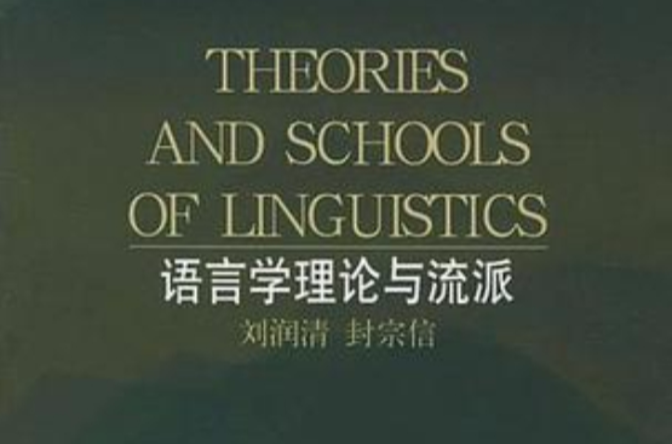圖書信息
叢書名: 普通高等教育“十一五”國家級規劃教材
平裝: 292頁
正文語種: 英語
ISBN: 9787040287097
條形碼: 9787040287097
尺寸: 24 x 18.4 x 1.6 cm
重量: 522 g
內容簡介
《語言學理論與流派》特點:注重培養學生的跨文化交際能力和文化鑑賞與批判能力。在教材設計時體現“全球視野,中國視角”的理念。這就是說,本系列教材在保持各門課程的思想性和批判性的優良傳統外,既向學生提供西方文化背景知識,也引導學生鑑賞和學習我國的優秀文化傳統。讓學生在多元文化背景下,熟悉掌握中外文化的共同點和差異。在這個基礎上,培養學生的鑑別和比較能力,啟發和誘導學生進行創新思維。
科學安排,系統設計。經過多年來對教學模式改革的探討,我國英語專業教學已總結出良性的教學規律,一般將四年的教學過程分為兩個階段,即基礎階段(一年級和二年級)和高年級階段(三年級和四年級)。按照此教學規律,本系列教材分為基礎階段教材和高年級階段教材,同時悉心設計了基礎階段和高年級階段的銜接。基礎階段教材的主要任務是傳授英語基礎知識,對學生進行全面的、嚴格的基本技能訓練,培養學生實際運用語言的能力、良好的學風和正確的學習方法,為進入高年級學習打下紮實的專業基礎。高年級階段教材的主要任務是在繼續打好語言基礎的同時,學習英語專業知識和相關專業知識,進一步擴大知識面,增強對文化差異的敏感性,提高綜合運用英語進行交際的能力。同時,根據《高等學校英語專業英語教學大綱》的課程設定,本系列教材將適用課程分為英語專業技能課、英語專業知識課和相關專業知識課三種類型,全面培養學生的語言能力、思維能力和終身學習能力,拓寬學生的知識面。
目錄
Part One Linguistics in Antiquity
Chapter One The History of Linguistics Since Plato
1.1 Plato
1.1.1 Function of language
1.1.2 Nature versus convention
1.1.3 Idea and reality
1.1.4 Denotation and connotation
1.2 Aristotle
1.2.1 Rhetoric
1.2.2 Rational investigation of language
1.2.3 Categories
1.2.4 Form
1.2.5 Poetics
1.3 The Stoics
1.3.1 Logic
1.3.2 Signification, signifier and the name-bearer
1.4 The Alexandrian School
1.4.1 Meter and poetry
1.4.2 Dionysius Thrax
1.4.3 Apollonius Dyscolus
1.5 Roman linguistics
1.5.1 Varro
1.5.2 Priscian
1.6 Medieval linguistics
1.6.1 Speculative grammar
1.6.2 Modistae
1.7 Cartesian linguistics
1.7.1 Language is human-specific
1.7.2 Mind and body
1.7.3 Mind and ideas
1.7.4 Semantic interpretation versus phonetic interpretation
1.7.5 Universality and Port-Royal Grammar
1.8 HistoricaI-Comparative linguistics and Neogrammarian
1.8.1 Historical linguistics
1.8.2 Comparative linguistics
1.8.3 The Neogrammarians
1.9 Linguistics in ancient India
Chapter Two The History of Linguistics in China
2.1 The Philosophy of language
2.1.1 Laozi: Arbitrariness
2.1.2 Confucius: Zhengming
2.1.3 Mozi: Language utilitarianism
2.1.4 Mencius: Innate moral intuition
2.1.5 Later Mohist dialecticians
2.1.6 Gongsun Long and Hui Shi:The School of Names
2.1.7 Zhuangzi: Skeptical relativism
2.1.8 Xunzi: Confucian conventionalism
2.2 Phonology
2.2.1 Old Chinese pronunciation studies
2.2.2 The influence of Buddhism
2.2.3 Middle Chinese phonological studies
2.2.4 Phonological studies in Ming and Qing dynasties
2.3 Chinese orthography
2.3.1 The invention of Chinese characters
2.3.2 The Six Scripts
2.3.3 A Dictionary of Etymology
2.3.4 The Right Element Principle
2.3.5 The Qing period
2.4 Philology
2.4.1 Scope of the discipline
2.4.2 Han dynasty scholars
2.4.3 From Yuan to Qing dynasties
Part Two Structuralism
Chapter Three Saussure: The Path to Synchrony
3.1 Background
3.2 General ideas
3.2.1 Issues of comparative and historical linguistics
3.2.2 Sound and thought
3.2.3 The role of linguistics in semiology
3.2.4 Diachrony and synchrony in linguistics
3.2.5 The langue-parole dichotomy
3.2.6 Arbitrariness and linearity of signs
3.2.7 SyntagmaUc and associative relations
3.2.8 Values and differences
3.2.9 Syntagmatic and associative relations
3.3 Assessment
3.3.1 Merits
3.3.2 Issues
Chapter Four American Structuralism
4.1 Background
4.2 Franz Boas
4.3 Edward Sapir
4.3.1 Background
4.3.2 General ideas
4.3.3 Basic tenets
4.4 Leonard Bloomfield
4.4.1 Background
4.4.2 General ideas
4.4.3 The Bloomfieldian assumptions
4.5 OtherAmerican Structuralists
4.5.1 Sapir's followers
4.5.2 Post-Bloomfieldian scholars
4.6 Assessment
4.6.1 Merits
4.6.2 Issues
Part Three Pioneers in Functionalism
Chapter Five The Prague School
5.1 Background
5.2 General ideas
5.3 Basic tenets
5.3.1 System and function
5.3.2 Synchronic phonology
5.3.3 Theory of linguistic onomatology
5.3.4 Theory of functional syntax: the movement of the mind in FSP
5.3.5 Linguistics and poetics
5.4 Assessment
5.4.1 Merits
5.5.2 Issues
Chapter Six The Copenhagen School
6.1 Background
6.2 General ideas
6.3 Basic tenets
6.3.1 Language is a form, not a substance
6.3.2 The four areas of study within every language
6.3.3 Certain relations in the process and the system
6.3.4 No one-to-one correspondents between content and expression
6. 3. 5 Linguistic theory prescribes a textual analysis
6.4 Assessment
6.4.1 Merits
6.4.2 Issues
Chapter Seven The London School
7.1 Background
7.2 General ideas
7.2.1 Bronislaw Kasper Malinowski
7.2.2 Firth
7.3 Basic tenets

